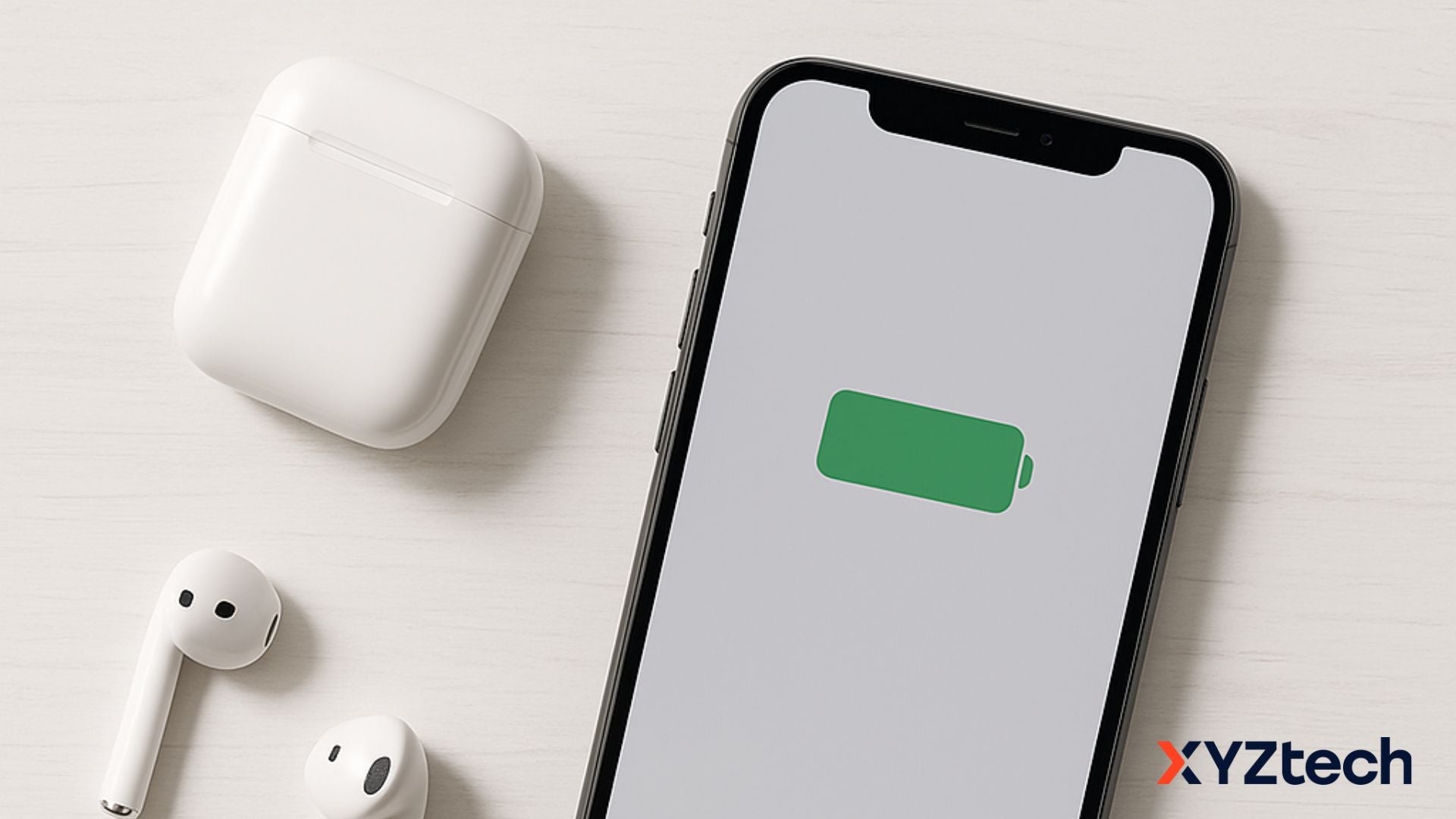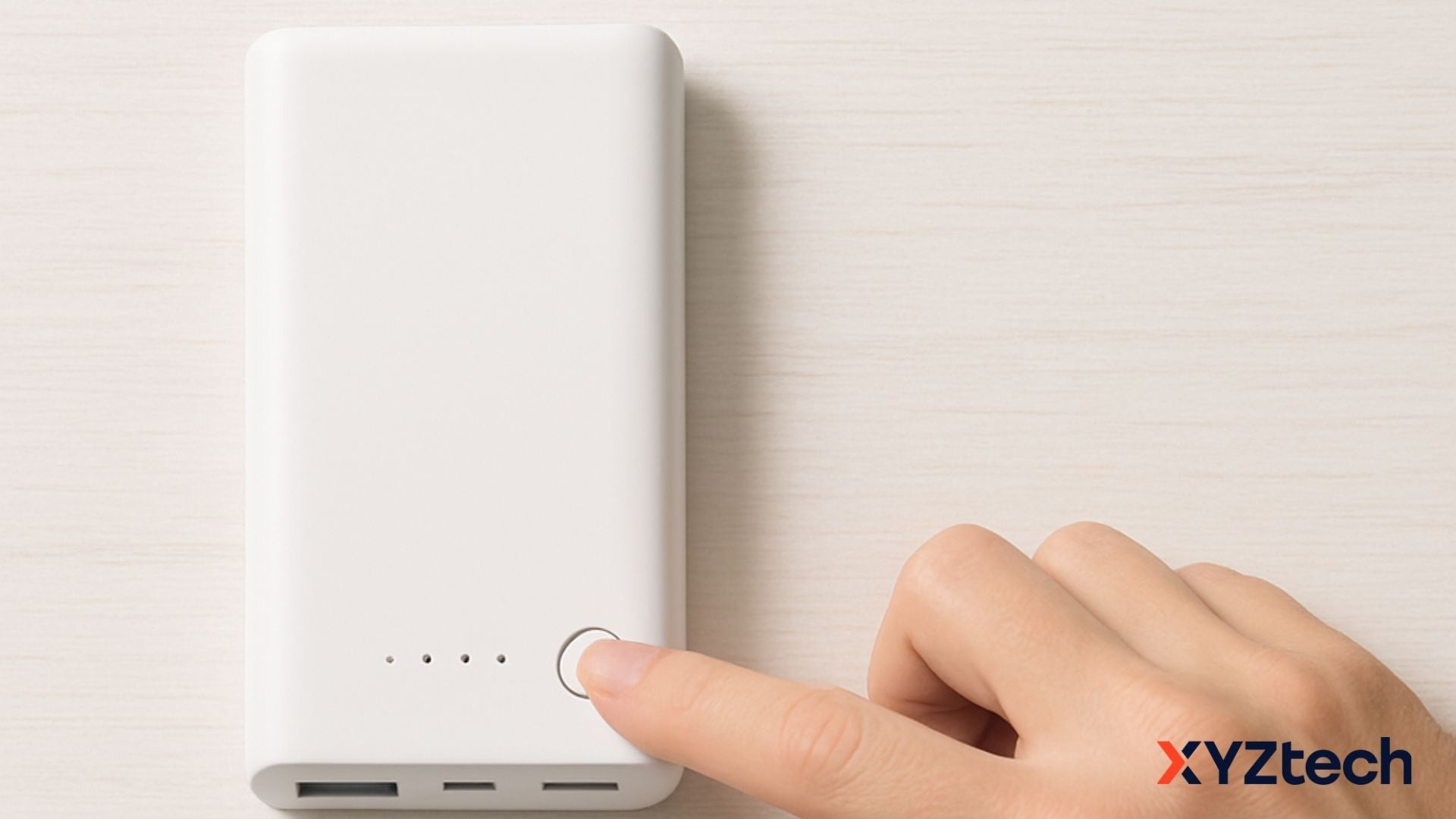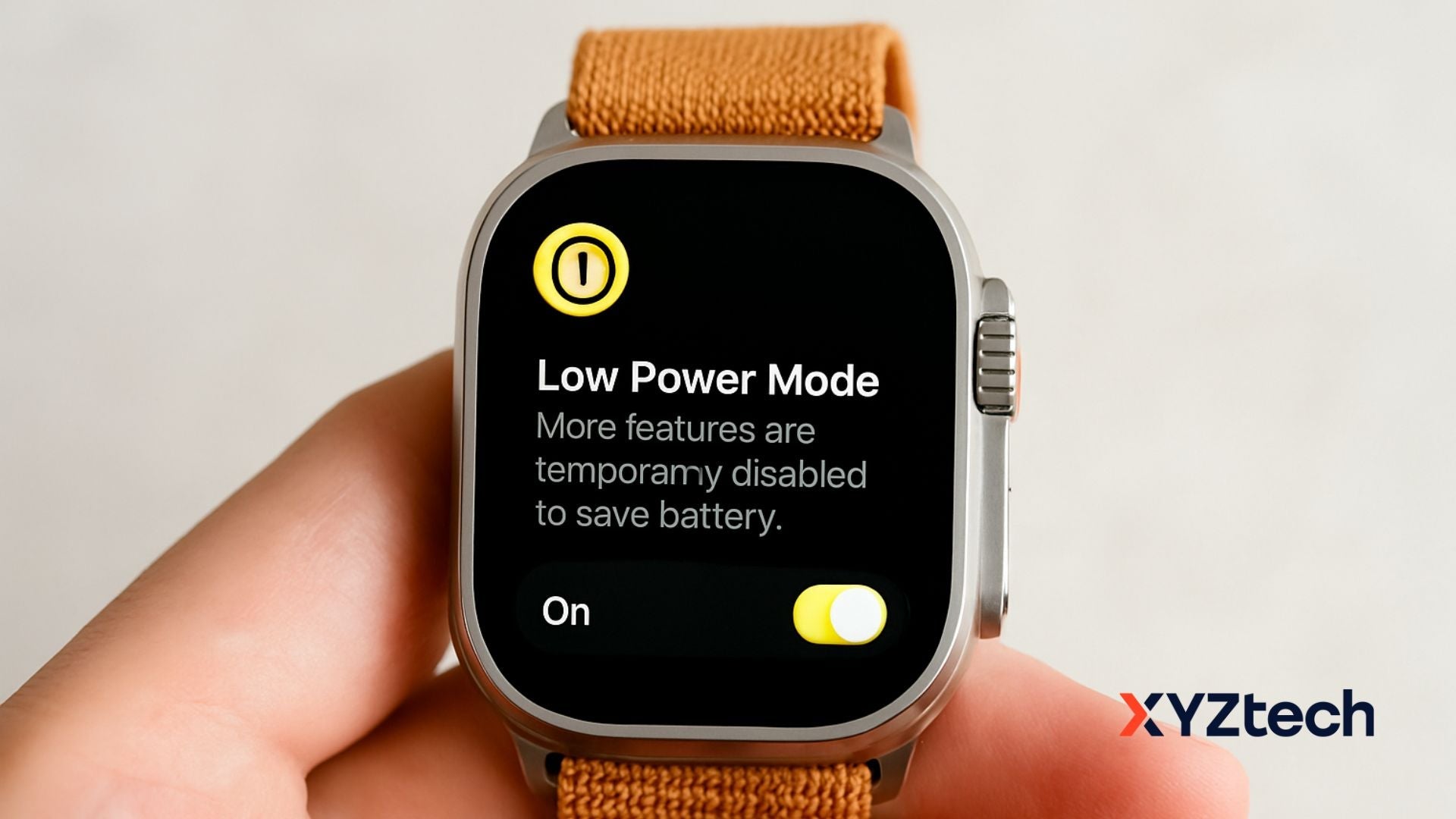Best Power Bank for Backpacking: What Really Matters on the Trail

When you're deep in the woods or high in the mountains, your gear matters—and that includes your power bank. Choosing the best power bank for backpacking isn’t just about picking the one with the biggest battery. It’s about finding the right combination of weight, charging speed, durability, and usability that fits your specific trail habits.
Today, we’ll break down the real-world advice from seasoned hikers, look at what features actually make a difference, and help you choose the backpacking power bank that makes the most sense for your adventures.
In this blog:
- What Makes the Best Power Bank for Backpacking?
- Solar Charging vs. Traditional Power Banks
- Bonus Features That Matter on the Trail
- Power-Saving Tips for the Trail
- Choosing the Right Backpacking Power Bank
- Flying with Your Power Bank? Read This First
- Frequently Asked Questions
Let’s get started!
What Makes the Best Power Bank for Backpacking?
Picking the best power bank for backpacking starts with understanding your trip needs. A thru-hiker doing 20+ miles a day will have very different needs than someone setting up a base camp for photography or field research.
Here are the main things to consider:
1. Battery Capacity: How Much Is Enough?
A 10,000mAh to 20,000mAh is the sweet spot for most hikers in a backpacking power bank. This gives you 2 to 5 full phone charges, depending on your device and how efficiently you use it.
-
10,000mAh
- Best for short trips or weekend hikes (2–4 days)
- Good for 2–3 full phone charges.
-
20,000mAh
- Best for weeklong hikes (5–7 days) or heavier use (photo-taking, navigation, Bluetooth gear).
- Good for topping up small electronics like earbuds or a headlamp.
Keep in mind: You don’t get the full rated capacity. Energy is lost in conversion, so expect about 70-75% usable charge.
That means a 10,000mAh power bank realistically delivers about 6,800–7,500mAh of usable charge. So, a 10,000mAh battery may only charge a 3,000mAh phone twice, not three times.
2. One Big Power Bank vs. Two Smaller Ones
Go Big If:
- You’re on a long trip with limited resupply opportunities.
- You only want to carry and manage one item.
Go Small (x2) If:
- You want backup options in case one dies.
- You’ll have town stops where you can recharge more often.
- You like the idea of faster recharge time and flexibility (one charges while the other is in use).
Pro tip: Rather than going for one heavy brick, consider bringing two lighter 10,000 mAh power banks. They're more versatile, easier to charge in town, and you always have a backup if one fails.
3. Charging Speed and Output
A lot of backpackers overlook this, but it’s important: the output speed of your backpacking power bank affects how fast your devices charge.
- Look for a portable charger with 18W output or higher (via USB-C Power Delivery or Quick Charge) to minimize time spent at a wall outlet.
- Lower output models (5W or 10W) charge painfully slow—fine overnight, but frustrating if you're recharging at a hostel or cafe.
- Smaller banks (10,000 mAh) usually recharge faster than 20k ones, which is helpful when you only get a quick window to charge up in town.
4. Weight vs. Power Trade-Off
Weight matters. Every ounce counts when you're carrying it up a ridge.
Aim for power banks that weigh under 7 oz (200g) for 10,000mAh, or under 13 oz (370g) for 20,000mAh.
Efficiency tip: Look for models that offer the best mAh per ounce. Anything under 0.7 oz per 1,000mAh is considered efficient for backpacking. Anything heavier might not be worth the added bulk unless you're staying off-grid for a long stretch.
Solar Charging vs. Traditional Power Banks
When choosing between solar charging and traditional backpacking power banks, it’s important to understand what each offers.
Traditional Power Banks
Traditional power banks are the go-to for most hikers: they’re lightweight, reliable, and charge quickly at any wall outlet. They hold a set amount of power and don’t rely on the weather. For trips with town stops or limited sun exposure, this is the most dependable choice.
Solar Charging
Solar charging, on the other hand, can seem like the perfect off-grid solution, but it’s not always practical.
Why Solar Sounds Cool but Isn’t Always Practical:
- Unpredictable output: Clouds, trees, or low-angle sun (especially in winter) can drastically reduce charging efficiency.
- Clipping it to your backpack won’t guarantee a full charge: Advertisements make it look easy, but unless the panel is angled perfectly to the sun and in clear conditions, it’ll barely move the needle.
- Terrible weight-to-output ratio: A solar panel that actually works is usually heavier than just carrying another battery pack.
When Solar Might Be Useful:
- You're stationary during the day (e.g., fishing, basecamp setup).
- You have ample sun exposure, ideally in an open field or on south-facing terrain.
- You use a detached solar panel + separate power bank setup (NOT 2-in-1 solar power banks. The batteries get cooked in the sun).
For most backpackers, it’s far more reliable to bring a high-capacity power bank and top it off during town stops.
Bonus Features That Matter on the Trail
Beyond capacity and speed, some smaller details make a big difference:
-
Pass-Through Charging
Allows you to charge your devices while the power bank itself is charging. Useful when you’re using a solar panel or limited to one wall outlet in town.
Not all power banks offer this safely. Check the manufacturer specs before assuming it’s included.
-
Number of Output Ports
If you’re carrying multiple electronics like a headlamp, GPS, camera, watch, or Bluetooth earbuds, you’ll need more capacity and the ability to charge more than one thing at a time.
That’s where multiple USB outputs come in handy. At least two ports let you charge your phone and another device, like a headlamp or watch, without taking turns.
The good news is, multi-port charging doesn’t always mean slower speeds. Some higher-end models maintain fast output even when powering two devices.
If you need more ports than your power bank offers, a lightweight splitter cable can give you extra flexibility without adding bulk.
-
Cold Weather Performance
Lithium-ion batteries drain faster in cold temperatures. On alpine hikes or winter trips, keep your power bank in a jacket pocket or sleeping bag overnight to preserve battery life.
-
Durability and Waterproofing
If you're heading into wet conditions or rough terrain, consider models with splash resistance or a ruggedized case. Some ultralight models sacrifice protection for weight savings—choose what fits your route.
Power-Saving Tips for the Trail
Even the best power bank for backpacking won’t last long if you’re not using it wisely. Here are some smart ways to stretch your battery out on trail:
- Airplane mode: Use it often as your phone wastes tons of energy searching for a signal.
- Disable Bluetooth & WiFi: Turn off Wi-Fi, Bluetooth, and location services unless needed. They constantly search for connections and drain power in the background.
- Limit screen time: Use your phone mainly for essentials like photos, maps, or journaling.
- Offline maps: Download GPS maps in advance (Gaia GPS, AllTrails, etc.)
- Low power mode: Activate battery saver features on your phone.
- Avoid cold drains: Keep your power bank and phone warm. Batteries hate the cold; store them in your sleeping bag or pocket overnight. Cold batteries = slower charging + power loss.
These tweaks add up. Combined with a solid capacity, they can easily get you through a multi-day hike without stressing about your next charge.
Choosing the Right Backpacking Power Bank
Let’s break it down by hiking style:
| Style | Capacity | Gear Charged | Notes |
| Weekend Warrior | 5,000–10,000mAh | Phone only, maybe a headlamp | Doesn’t need fast charge |
| Long-Distance | Two 10,000mAh (for more flexibility) or one 20,000mAh | Phone, GPS, headlamp, watch | Look for 18W+ output. |
| Basecamp / Research | 20,000mAh (or higher) + foldable solar panel | Laptop, camera, drone, tablet | Needs PD output (18W or higher) |
Here’s a sample power kit that works for most people doing a 4–7 day trip:
- 2 × 10,000 mAh power banks
- 1 fast wall charger (with 2+ ports if you're carrying multiple banks)
- Short USB cables (6-inch ones are light and tangle-free)
- Phone + essentials (headlamp, maybe wireless earbuds)
Optional: A lightweight solar panel (10W+) if you're setting up camp daily in sunny areas and want an emergency backup.
Flying with Your Power Bank? Read This First
If your backpacking trip starts with a flight, keep this in mind: power banks must go in your carry-on, not your checked luggage. Most airlines only allow portable chargers under 100Wh (around 27,000mAh) without special approval. Anything bigger might get confiscated or, worse, delay your trip.
Tip: Always check your airline’s policy before flying, especially for international trips where the rules can vary. To know more, check these guides:
- Power Bank in Airplane Travel: What’s Allowed and What’s Not
- Airline Battery Restrictions Updated: What Travelers Must Know
Frequently Asked Questions
Are you allowed to carry power banks on planes?
Yes, you can bring power banks in your carry-on bag, but not in checked luggage due to fire risks from lithium batteries. Most airlines limit the capacity to 100Wh or around 27,000mAh.
What is the 20% rule for backpacking?
To avoid overpacking, your full backpack shouldn't weigh more than 20% of your body weight. For example, if you weigh 150 lbs, your pack should be no heavier than 30 lbs. For day hikes, aim for 10% or less.
Are solar chargers worth it for backpacking?
They can be if your trip allows it. Solar panels work best when stationary in direct sunlight. If you’re constantly moving through shaded trails, charging will be slow. But at a sunny campsite, they’re a handy way to recharge a power bank.
Final Thoughts: Choosing the Best Power Bank for Backpacking
In the end, the best power bank for backpacking isn’t the one with the most hype or the biggest battery—it’s the one that fits your trail style. Think about how long you’ll be out, what devices you’ll need, and how much weight you’re willing to carry.
Don’t overcomplicate it with flashy features unless they serve your needs. Prioritize smart use, efficient charging habits, and a realistic sense of what you’ll actually use on the trail.
Got your own go-to setup? Share the power kit that works for you in the comments. We’d love to hear what’s powering your adventures!
Related Articles
How to Make Your Phone Battery Last Longer: Battery-Saving Tips
Camping Power Bank: Your Adventure Power Source!
Rugged Power Banks: Ultimate Power Solution for Active Lifestyles



